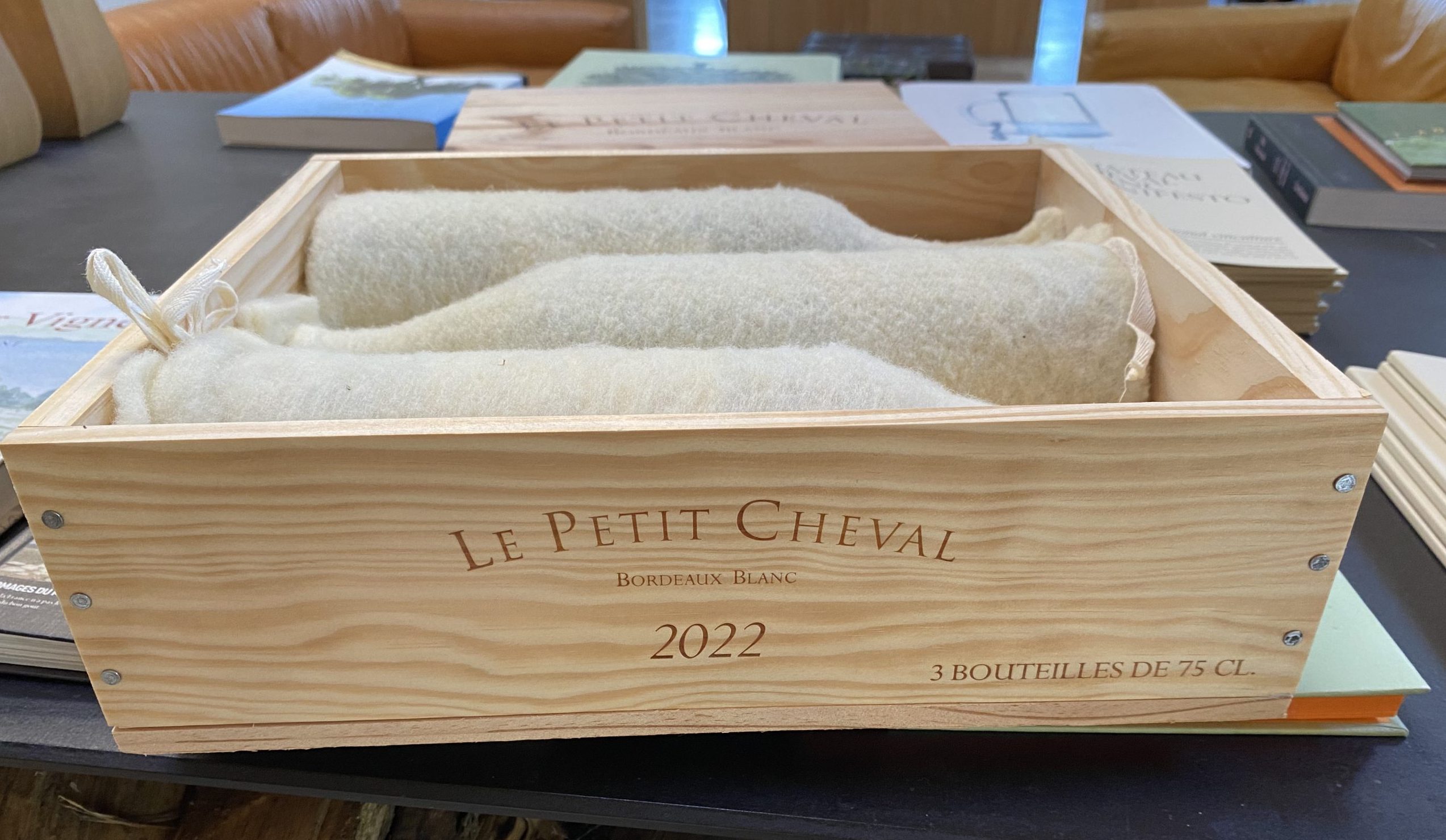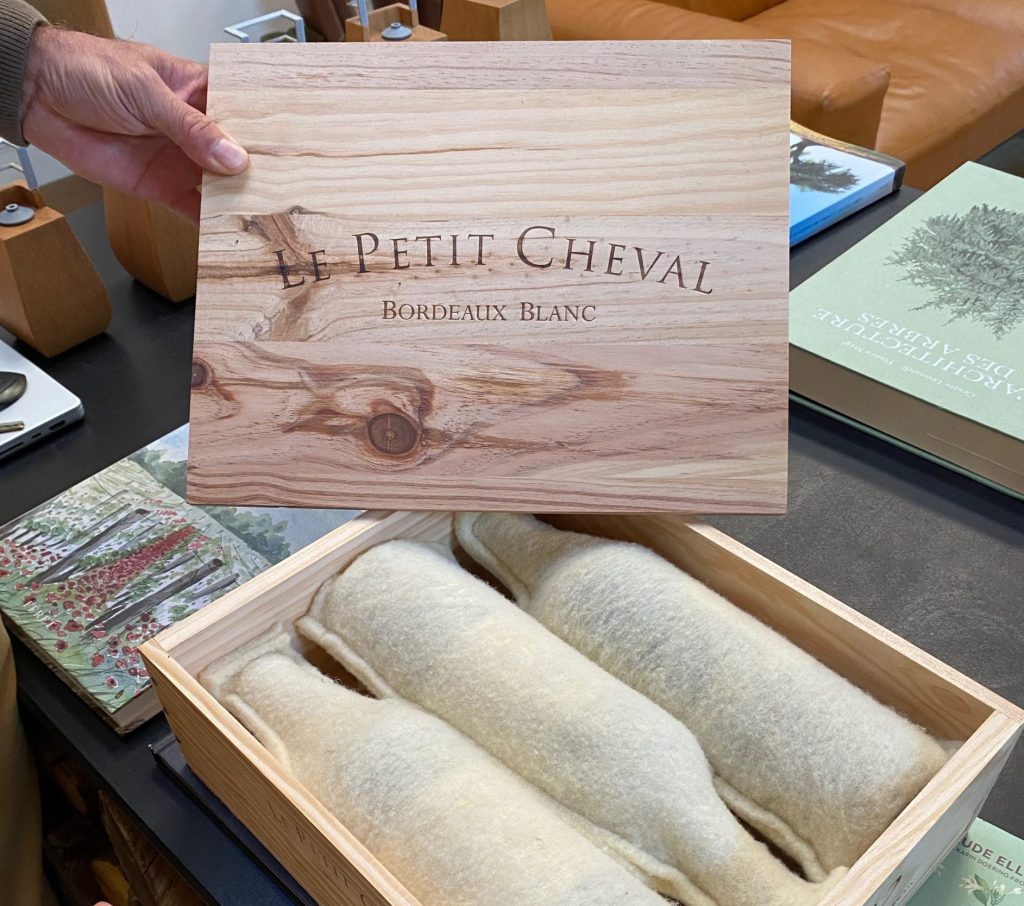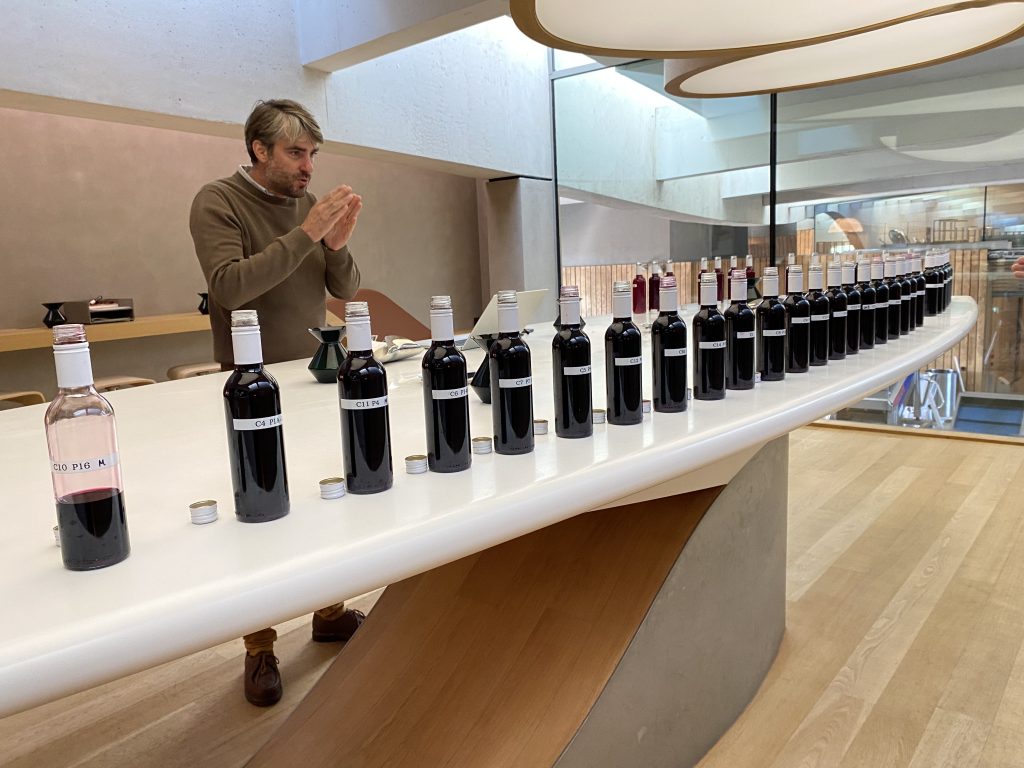This website uses cookies so that we can provide you with the best user experience possible. Cookie information is stored in your browser and performs functions such as recognising you when you return to our website and helping our team to understand which sections of the website you find most interesting and useful.
Cheval Blanc makes environmental case with new eco-friendly packaging
Wooden cases are part of the very identity and mystique of the great wines of Bordeaux. Yet their carbon and wider environmental footprint is a growing concern, particularly for the châteaux who have rethought almost all aspects of their viticultural and vinification practice to improve both their ecological and their environmental sustainability.

Cheval Blanc has been one of the leaders of this movement in Bordeaux and having been among the first to look at the sustainability of its packaging, it is unsurprising that, after sustained reflection, it is one of the first to propose a solution.
The project started with an ambitious brief: to promote regional expertise while using sustainable material. To bring it to life, the estate called on the expertise of Adam, the French-based leader in wooden packaging for the wine industry, which has been working with the estate since 2009.
The redesign of the packaging has now been finalised after a year of development to reflect the eco-responsible and territorial approach. It will see bottles of Cheval Blanc wrapped in individual woollen sleeve made from Basque-Béarn wool to cushion them, before being packed in cases made from pine from the nearby Landes region.
This reflects their mutual desire to local sourcing and to contribute to revitalising the regional wool and maritime pine industries.
Although 90% of Bordeaux wine cases are made from Galician pine – despite the fact that New Aquitaine is Europe’s largest pine-growing region in terms of surface area – Cheval Blanc and Adam opted for French wood, harvested and processed close to the wine estate, using a fourth-generation family based in the Lot-et-Garonne region, Gaspin Bois.
The team harvest the knotty maritime pine from the Landes de Gascogne within a maximum 60km radius of the timber processing plant. The local sourcing and lighter weight construction of the boxes help reduce their environmental impact and slashes the amount of waste produced. The knots in the wood and the irregular appearance are also celebrated as a feature of the case.
Pierre-Olivier Clouet, managing director of Château Cheval Blanc, explained that the project was driven by the desire to align the estate “convictions [about territorial responsibility] with [its] actions” and was part of a “process of reflection born of our changing perception of the ideal case.”
“Ten years ago, we wanted a smooth-faced, knot-free and robust case. Today, our practices have evolved, prompting us to revisit this concept to create eco-packaging, taking into account the global challenges facing all industries, well beyond the wine sector,” he said.
“This case is a concrete expression of our conviction to promote forest management in the South-West, optimising the use of materials and establishing a local presence. We are really proud that this project celebrates French manufacturing and contributes to the re-animation of abandoned industries, while breaking with the traditional codes of Bordeaux wines.”

Jérôme Bétuing, CEO of Gaspin Bois said the team at Gaspin had been very enthusiastic about the new case, noting that it was important that it worked with people “whose values we share”.
“Let’s hope that this project will lead to a change in practices in the industry,” he added.
Significant transformation
To design the ideal padding that is natural, functional and aesthetically pleasing, Cheval Blanc and Adam carried out the development in collaboration with Traille, a company founded by Muriel Morot in 2019, which recovers wool from the Basque and Béarn regions that would otherwise be jettisoned or exported for processing and has ambitions to re-industrialise this know-how.
Jean-Charles Rinn, CEO of Adam, explains that at present only 4% of the wool shorn in France is processed domestically, with 1,200 tonnes thrown away, burnt or buried every year from the South-West alone.
“Yet this biodegradable material, with its particularly resistant fibres, offers ideal insulating and cushioning properties!” he said.
According to Morot, until the Covid crisis, around 80% of the wool harvested in France was sent to China to be processed and returned “in the form of carpets, mattresses, [and] clothing.”
“By buying our wool, Adam and Cheval Blanc are not only helping to rehabilitate a material with many virtues, they are also helping to perpetuate a pastoral tradition,” she said.
By 2025, more than 20 tonnes of wool will be used each year to wrap and protect bottles of Cheval Blanc – a significant amount that will hopefully inspire others to change practises.
The first releases from the château to use the new case design will be Le Petit Cheval Blanc 2022 (released on the 3 September via La Place de Bordeaux) and Cheval Blanc 2022 (released en primeur and available in bottle from the winter).
As an aside, it’s notable that the woollen sleeves make a fine set of wine ‘socks’ for hiding the identity of bottles in a blind tasting!
Tasting notes

Le Petit Cheval Blanc 2022 (Bordeaux blanc; 71 % Sauvignon Blanc, 29 % Sémillon; 13% alcohol; crafted from a mosaic of 13 parcels from the 6.6 hectares of what was once the Tour du Pin vineyard just across the street from the château itself; tasted in October 2024 with Pierre-Olivier Clouet). Crisp, fresh, bright and aerial, this has a lovely leafy Sauvignon signature to the aromatics. White currant leaf; blood orange; mandarin zest; lime; linden; beeswax; which peach; and a very evident stony minerality. There’s a hint of rose petal and an intriguing note of tomato stalk and vine, a touch of fleur de sel on the finish. On the palate this is lithe and dynamic, limpid and crystalline. It’s succulent, too, but always poised and taut, bright with youthful energy and potential. 94+.
Cheval Blanc 2022 (Saint-Émilion; 53% Merlot, 46% Cabernet Franc and 1% Cabernet Sauvignon; there is no Petit Cheval in this vintage; 41 of the 43 parcels in production were used in the final blend; tasted en primeur with Pierre-Olivier Clouet at the property). Fabulously elegant with quite a tight and narrow frame, so no great amplitude and that just intensifies the sense of freshness and the density and compactness. This is so very Cheval. Graphite rods and cedar and the most gracious Cabernet notes – those leafy, herbal, floral undercurrents that wells up from the bottom of the palate, bringing tension, detail and fascinating textural dynamism. Wow. This texturally sublime – what a mouthfeel! So cool; so intensely cool; it is like diving into the deepest plunge-pool. So enervating, so refreshing, so sensorily-dynamising. But it is also opulent in its concentrated purity and it is perhaps the most finely pixilated wine of the vintage at this stage (accentuated again by the narrow frame and the additional concentration and compactness that comes from that). A wine of perfect balance and perfect harmony. Magical, yet with nothing out of place, nothing overstated. Indeed, it has that slight touch of austerity that is so rare in this vintage. Another tear in the corner of my eye – Cheval Blanc has done that to me before. Such levity. 98-100.
Related news
Playing the long game: fine wine’s global trajectory
Bordeaux Index celebrates success of The Great Wine Dinner and Auction
Will 2025 prove a 'reckoning' for the hors Bordeaux campaign?

